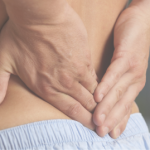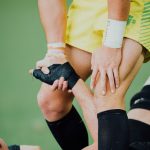Knee-owledge is POWER!
Why are you getting knee pain? Dr Google can be unreliable and confusing. Time to dive a little deeper inside your knees to better understand your anatomy and potential pain sources.
Knees are a little more complicated than most people think. And to make things more confusing, the hip above the knee can play an integral role in knee positioning and control.
Damage or stress to the following structures; bones, joints & cartilage, muscles & tendons, ligaments & connective tissue, nerves & fat pads, can lead to knee pain.
Muscle Control
The Quads, located over the anterior thigh connecting to the shin below the knee via the Quadriceps Tendon (tissue rope connecting muscle to bone) which covers the kneecap (patella). This muscle can straighten the knee when active.
The Hamstrings are located on the posterior thigh and connect to the shin via the Hamstring tendons. When active they bend the knee.
The Calves are located on the posterior shin and connect up to the back of the knee and can aid the hamstring to bend the knee.
SURPRISINGLY to most people, the GLUTES are one of the key stability muscles for the knee. They are located at the hip and help to determine the positioning of the lower limb, especially in weight bearing. An imbalance or weakness here can alter the stress placed upon each of the joints and muscles supporting the knee.
Bones, Joints and Cartilage
The knee can be split into two main joints. First between the femur (thigh) and tibia (shin), the second between the patella (kneecap) & femur. Each of these bones meet to create a joint that is lined with cartilage that can also be a source of pain when damaged.
The Tibio-femoral joint has two kidney shaped joint surfaces lined with supportive cartilage called the meniscus, a common injury site in weight-bearing, twisting injuries.
The patellofemoral joint is shaped more like a triangular wedge and is held in place by the Quad muscle and its tendon. An imbalance between the quad muscles positioning the patella can also be a potential precursor for knee pain.
Ligament Support
Supportive connecting ropes joining bone to bone, your ligaments are the last line of defence against instability. At the knee we find major ligaments within, behind and either side of the tibiofemoral joint. The most famous knee ligament commonly injured is the ACL.
Bursa / Fat Pad
This tissue plays an important role to reduce the friction from tendons rubbing on bones and joint surfaces. When muscles tighten, fatigue and malfunction; their tendons may begin to irritate these fat pads, causing pain.
TAKE HOME
When you have knee pain, instead of using Dr Google looking for an exact diagnosis, use Google to help expand your anatomical understanding of the tissues located where you feel your pain. This will be more useful when discussing your pain with your physiotherapist here at LEADERS Sports & Spine Physiotherapy.
David McCawley – Senior Physiotherapist






